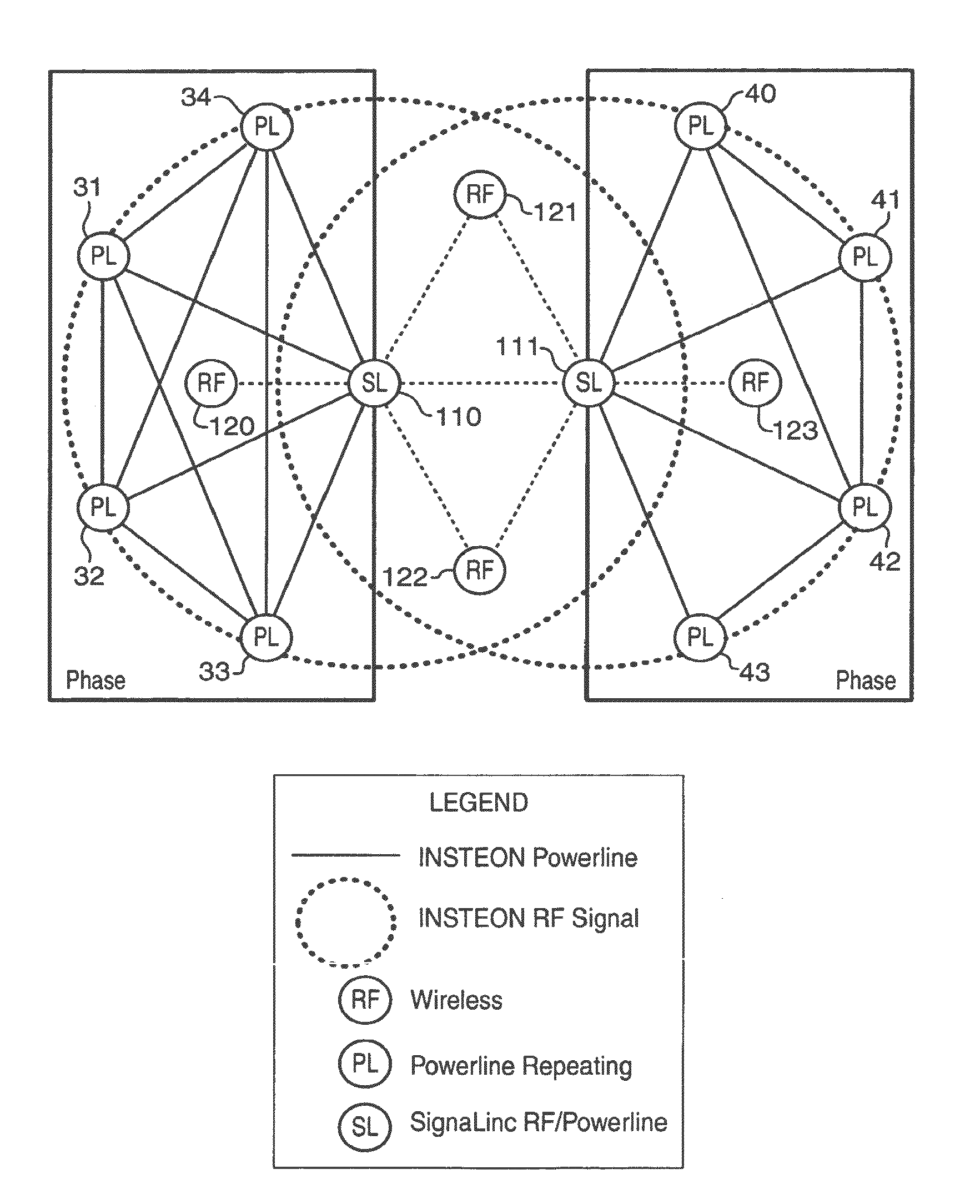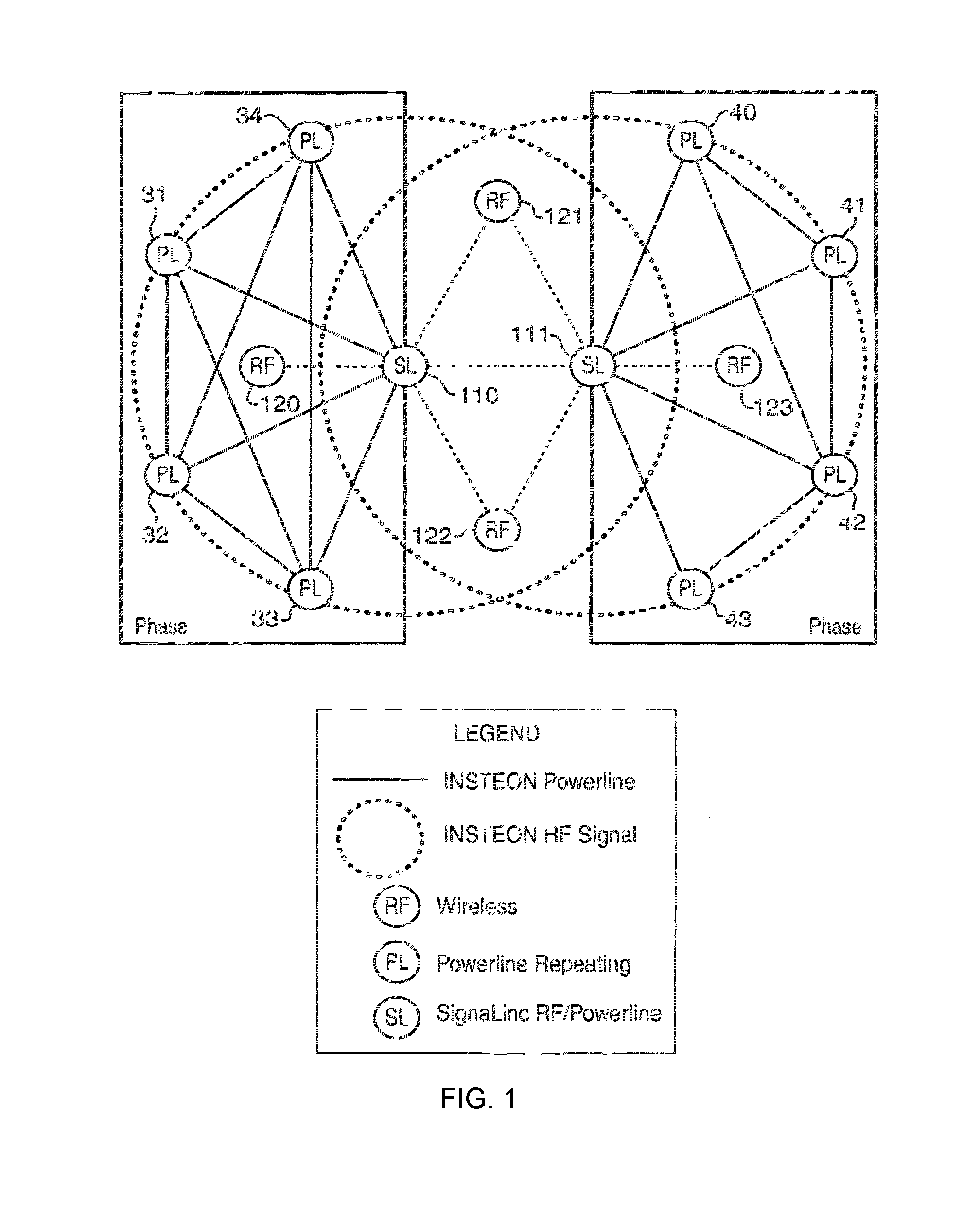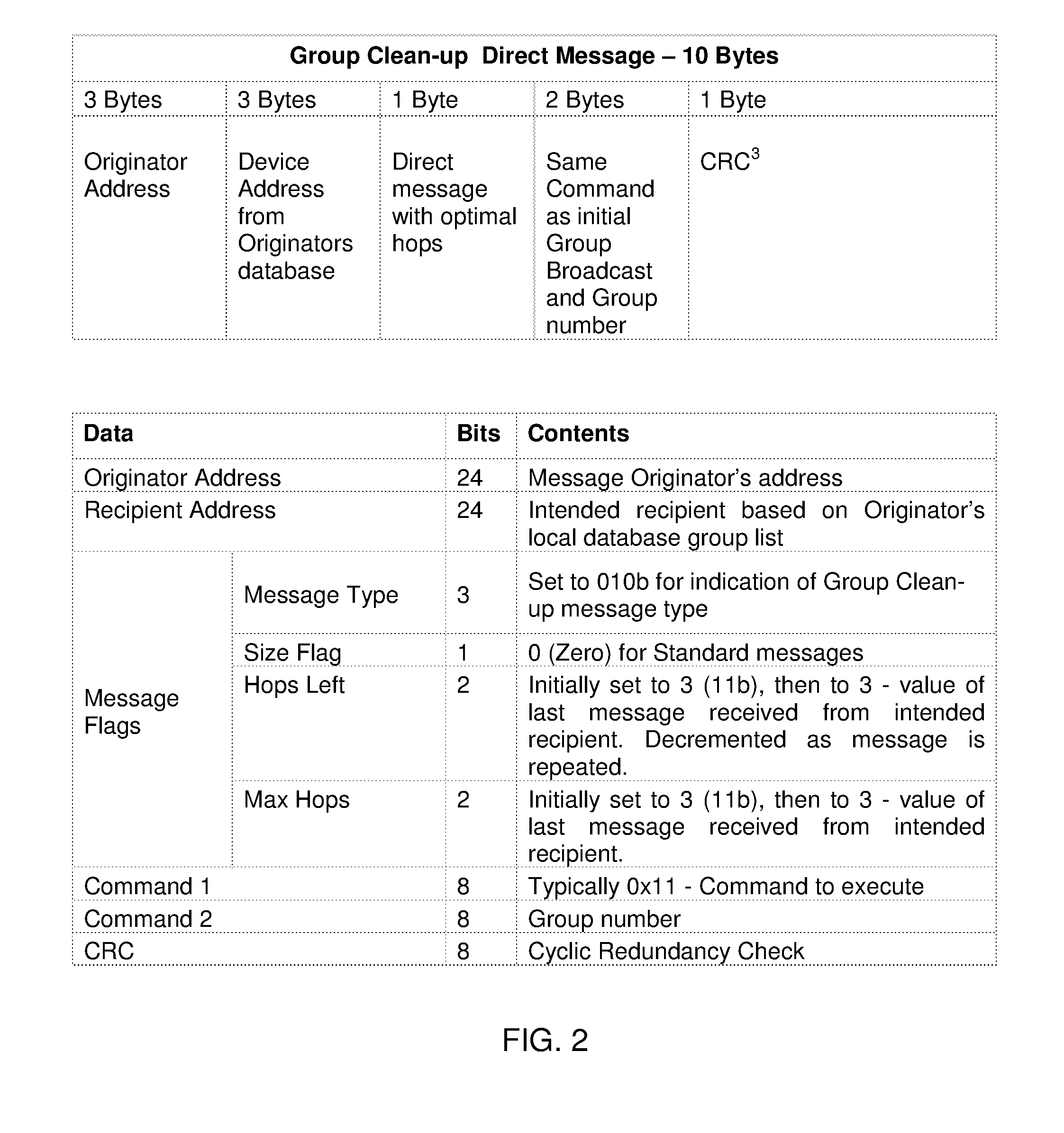Acknowledgement as a propagation of messages in a simulcast mesh network
a message propagation and message technology, applied in the field of insteon® network, can solve the problems of expensive remedial steps and achieve the effect of cost and time saving
- Summary
- Abstract
- Description
- Claims
- Application Information
AI Technical Summary
Benefits of technology
Problems solved by technology
Method used
Image
Examples
Embodiment Construction
[0013]As defined in U.S. Pat. No. 8,081,649 which is incorporated herein by reference in its entirety, a network of spatially separated Insteon® modules (“devices” herein) are able to communicate by electrical or optical transmission means with each other so that they may be used to relay messages to intended recipients although such recipients are not able to directly receive a transmission from a particular device. FIG. 1 is an example of such a network as previously described in the '649 patent and shows how multiple Insteon devices, each of which is capable of repeating transmissions, form a reliable communications network. In FIG. 1 devices 110 and 111, are capable of both power line and radio frequency (RF) communications. Devices 120, 121, 122, and 123 are only capable of RF communications. The remaining devices: 31, 32, 33, 34 and 40, 41, 42, 43, are only capable of power line communications. Every device is capable of repeating received transmissions, using the Insteon prot...
PUM
 Login to View More
Login to View More Abstract
Description
Claims
Application Information
 Login to View More
Login to View More - R&D
- Intellectual Property
- Life Sciences
- Materials
- Tech Scout
- Unparalleled Data Quality
- Higher Quality Content
- 60% Fewer Hallucinations
Browse by: Latest US Patents, China's latest patents, Technical Efficacy Thesaurus, Application Domain, Technology Topic, Popular Technical Reports.
© 2025 PatSnap. All rights reserved.Legal|Privacy policy|Modern Slavery Act Transparency Statement|Sitemap|About US| Contact US: help@patsnap.com



